How to Go Beyond Standard Lighting Plans for Your Luxury Home in the Upcoming Year
In most residential builds, a standard lighting plan is a one-size-fits-all blueprint that includes ceiling-mounted fixtures, recessed downlights, and a few functional switches. While this approach is adequate for basic illumination, it’s far from sufficient for a luxury home where design is meant to inspire, comfort, and impress.
The Limitations of Standard Plans
Standard lighting plans prioritize uniform brightness over nuance. They’re often driven by efficiency and code compliance rather than creative vision. These plans typically rely on a grid of overhead lights, with minimal layering or adaptability. The result? Rooms that are well-lit—but flat, uninspired, and sometimes harsh. There’s little thought given to how lighting interacts with materials, how it can shape a mood, or how it can enhance a home's architecture.
Cookie-Cutter Doesn’t Cut It in High-End Design
Luxury homes are anything but generic. They’re personal, refined, and full of curated detail—qualities that demand a customized lighting approach. Cookie-cutter plans overlook the unique scale, style, and spatial flow of high-end interiors. They ignore opportunities to spotlight statement art pieces, bring warmth to textured walls, or create intimacy in grand spaces. Simply put, standard solutions can’t serve a home that’s meant to be extraordinary.
Missed Opportunities for Mood, Architecture & Personalization
Great lighting does more than illuminate—it sculpts space, enhances materials, and sets an emotional tone. Standard plans miss the chance to:
- Use layered lighting to create day-to-night ambiance
- Highlight architectural elements like alcoves, beams, or floating staircases
- Tailor color temperature and brightness for specific moods or activities
- Integrate lighting seamlessly into smart home systems for effortless control
Embracing a Layered Lighting Strategy
One of the most transformative approaches in luxury lighting design is the layered lighting strategy—a thoughtful combination of ambient, task, and accent lighting. Unlike the flat, uniform glow of a standard setup, layered lighting brings depth, drama, and intentionality to a space. It doesn’t just light a room—it tells a story.
The Power of Ambient, Task, and Accent Lighting Combined
Each type of lighting serves a unique purpose:
-
Ambient lighting is the foundation. It provides general illumination, often from ceiling fixtures or integrated architectural lighting like cove or recessed lights.
-
Task lighting is more focused, designed to illuminate specific activities such as reading, cooking, or grooming. Think pendant lights over a kitchen island or a sculptural desk lamp in a home office.
-
Accent lighting adds the magic. It highlights artwork, architectural features, or textured walls. It’s the kind of lighting that draws the eye and creates emotional impact.
When these layers are balanced and integrated, they offer a dynamic and flexible environment. A room can shift from functional to romantic, from open and bright to cozy and intimate—all at the flick of a switch or tap of an app.
Using Layers to Define Zones, Moods, and Purposes
Luxury homes often feature open-plan layouts and multifunctional spaces. Layered lighting becomes an essential tool in visually zoning these areas without the need for walls. For example:
-
In a luxury living room, recessed ambient lighting may softly illuminate the whole space, while wall sconces create a reading nook and LED uplighting subtly highlights a stone fireplace.
-
In a spa-inspired bathroom, soft ambient lights provide a calming base, while task lighting ensures clarity at the vanity, and undercabinet strip lights add a glow that feels indulgent and serene.
-
In a walk-in closet or dressing room, spotlights can showcase couture fashion, while warm ambient lighting flatters skin tones and creates a boutique-like experience.
Each layer works in harmony to support not just how a space looks, but how it feels and functions.
Real-Life Examples of Multi-Layered Luxury Lighting
-
In a Beverly Hills modern estate, lighting designers used linear LEDs tucked into stair treads for guidance, pendant sculptures for drama in the double-height entry, and indirect cove lighting to float the ceilings—no single light source dominates, yet the result is breathtaking.
-
A Parisian-style penthouse used crystal chandeliers for ambient light, vintage brass lamps for tasks, and adjustable gallery lighting to spotlight antique paintings, blending old-world elegance with modern flexibility.
-
In a minimalist mountain retreat, layers of warm LED strips hidden behind wooden panels, paired with task lighting in reading alcoves, turn stark simplicity into tranquil luxury.
Highlighting Architectural Features with Light
In luxury home design, light is more than a source of illumination—it’s a sculptor, a storyteller, and an amplifier of architecture. The right lighting doesn’t just brighten a space; it enhances its texture, depth, and detail, bringing out the beauty that might otherwise go unnoticed. When used thoughtfully, lighting becomes a tool to reveal craftsmanship, draw attention to statement features, and elevate everyday materials into design moments.
Enhancing Texture, Depth, and Design Details
Every luxury home is filled with unique surfaces—rich woods, veined marble, hand-troweled plaster, textured stone, and architectural elements like archways, niches, and molding. The magic happens when these elements are brought to life with purposeful lighting.
-
A soft grazing light across a stone wall reveals its rugged texture.
-
A narrow beam aimed at a coffered ceiling draws the eye upward, emphasizing height and volume.
-
Linear lighting under floating shelves or cabinetry adds definition and creates a weightless, modern aesthetic.
These small details make a dramatic impact when lit correctly, turning architectural nuances into design highlights.
Techniques: Backlighting, Uplighting, Cove Lighting & Custom Fixtures
Modern lighting technology offers countless ways to showcase architectural beauty:
-
Backlighting: Perfect for translucent materials like onyx or etched glass, backlighting creates a glowing effect that adds depth and luxury. It’s often used in statement walls, countertops, or behind mirrors.
-
Uplighting: By casting light upward, this technique can add grandeur to columns, sculptural staircases, and textured walls. It brings drama and elegance, especially in tall or narrow spaces.
-
Cove lighting: Installed in recessed ceilings or behind architectural ledges, cove lighting casts a soft, diffused glow that creates a floating effect. It’s ideal for defining ceiling geometry or adding ambiance without visible fixtures.
-
Custom fixtures: Bespoke lighting pieces that align with architectural lines—such as a linear chandelier following the length of a dining table or sculptural sconces flanking a fireplace—can double as art while reinforcing the room’s design language.
Luxury Isn’t Just About Light—It’s About What It Reveals
The true sophistication of lighting lies not in how much of it there is, but in what it highlights. Luxury design is defined by layers of meaning, materiality, and mood—and light reveals all three. It draws attention to the bespoke, the hand-crafted, the intentionally placed.
Custom Fixtures and Statement Pieces
In the world of luxury interiors, lighting is not merely functional—it’s an expression of identity and artistry. While standard recessed cans serve a basic role, they fall short when it comes to creating visual impact or conveying a unique design perspective. Custom fixtures and statement pieces are the jewels of a well-designed space, often acting as both focal points and sources of atmosphere.
Beyond Recessed Cans: Sculptural Chandeliers, Designer Pendants, Artisanal Sconces
Luxury lighting thrives in the unexpected. Sculptural chandeliers that echo the geometry of a staircase, hand-blown glass pendants that glisten like suspended art, or textured bronze sconces that cast poetic shadows—all go far beyond the conventional.
These pieces serve as functional art: they provide light, yes, but they also offer scale, drama, and style. Whether suspended above a grand dining table or subtly glowing in a powder room, statement fixtures can define a room’s character.
How Custom Fixtures Elevate the Feel of a Space
A custom light fixture does more than illuminate—it tells a story about the homeowner’s taste and the home’s architectural soul. Whether it's a minimalist LED sculpture in a modern villa or a cascading crystal chandelier in a classical estate, a bespoke piece creates a sense of place and personality.
Custom lighting allows:
-
Perfect alignment with spatial proportions and ceiling height.
-
Tailored material choices that echo the interior palette.
-
Unique design narratives that can’t be replicated.
These details are what turn a house into a truly luxurious home—where every element feels deliberate, refined, and irreplaceable.
Tips for Selecting or Commissioning Bespoke Lighting Designs
-
Start with scale: A statement piece should complement the room’s volume. Too small, and it’s lost; too large, and it overwhelms.
-
Consider materials: Choose finishes that harmonize with other design elements—warm brass, matte black, alabaster, glass, or natural wood.
-
Work with artists or designers: Collaborate with lighting designers, artisans, or galleries that specialize in custom fabrication.
-
Think in layers: Use statement lighting as the visual anchor, but pair it with supportive layers for balanced illumination.
-
Stay functional: Beauty shouldn’t sacrifice utility. Ensure dimmability, appropriate brightness, and compatibility with your smart system if needed.
Sound, Scent, and Light: Holistic Design Integration
True luxury lies in multi-sensory experiences. Today’s most innovative homes blend light with sound and scent to create immersive environments. For instance:
-
A chandelier integrated with directional speakers in a home spa.
-
Scent-diffusing pendant lights that trigger wellness routines.
-
Lightscapes programmed to evolve with ambient music or seasonal rhythms.
This holistic approach elevates lighting beyond visibility—it becomes a feeling, a mood, an atmosphere you step into.
Dynamic Lighting for Wellness, Relaxation, and Stimulation
Wellness-driven lighting is no longer a trend—it’s a necessity in luxury living. With dynamic and tunable lighting, you can mimic natural daylight patterns, improve sleep cycles, and support productivity or relaxation as needed:
-
Cool, bright tones energize morning routines.
-
Warm, dimmed glows ease you into the evening.
-
Colored LED scenes can boost mood or create drama for entertaining.
Planning Ahead: Tips from Lighting Designers
When it comes to finally executing the plan of luxury lighting, timing is everything. While many homeowners consider lighting toward the end of a project, expert designers agree: the earlier you plan, the more beautiful—and functional—your result will be. In high-end homes, lighting isn't just an accessory; it's a foundational design element that should be considered from day one.
When to Bring in a Lighting Designer
Ideally, a lighting designer should be consulted during the architectural planning or early renovation phase—not after drywall goes up. Why?
-
Lighting needs to be integrated into ceiling plans, electrical layouts, and structural elements.
-
Advanced systems like smart controls, hidden LED tracks, and cove lighting require early coordination with architects, builders, and electricians.
-
Designers can suggest creative lighting solutions tailored to the home’s layout, materials, and intended mood—solutions that would be impossible or costly to retrofit later.
Early collaboration ensures that lighting becomes a natural part of the home’s flow, rather than an afterthought.
Common Luxury Lighting Mistakes—and How to Avoid Them
Even in high-end homes, missteps happen. Here are a few common pitfalls and how to sidestep them:
-
Overlighting: Too many bright fixtures can wash out a space and kill its ambiance. Solution: Use dimmers, layering, and targeted lighting zones.
-
Underutilizing layers: Relying solely on recessed lighting creates a flat, lifeless environment. Solution: Integrate task and accent lights to add depth and richness.
-
Ignoring color temperature: Mixing warm and cool light sources can result in visual dissonance. Solution: Choose consistent, tunable lighting that complements materials and moods.
-
Poor placement: Fixtures hung at the wrong height or placed without considering furniture layout can ruin proportions. Solution: Align lighting with furniture plans and sight lines from the start.
-
Skipping control systems: Luxury homes need more than basic on/off switches. Solution: Invest in intuitive smart systems that allow scene setting, automation, and remote access.
Budgeting Realistically for High-End Lighting Systems
Lighting in a luxury home is a significant investment—but one that pays dividends in comfort, style, and long-term value. Here’s how to approach budgeting:
-
Allocate 5–10% of your total build or renovation budget to lighting and lighting design.
-
Break it into categories: architectural lighting, decorative fixtures, controls/smart systems, and labor/installation.
-
Plan for flexibility: Set aside contingency funds for last-minute upgrades, like bespoke fixtures or new tech.
Remember, lighting impacts every room, every surface, and every experience within your home. It's not just a line item—it's a design tool that enhances everything around it. When done right, it adds beauty, function, and soul. Planning ahead making sure that lighting doesn't just work—it wows.












































































































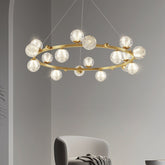

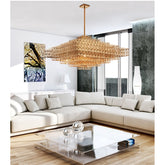

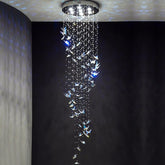

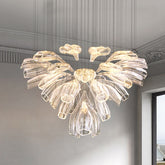

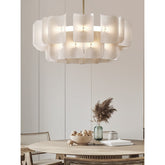

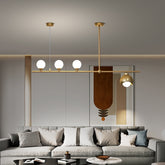

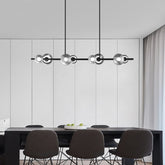

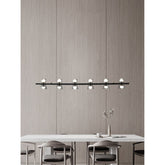

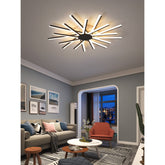

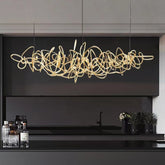




3 Comments
zh1r0d
qlj53e
d7s0m4